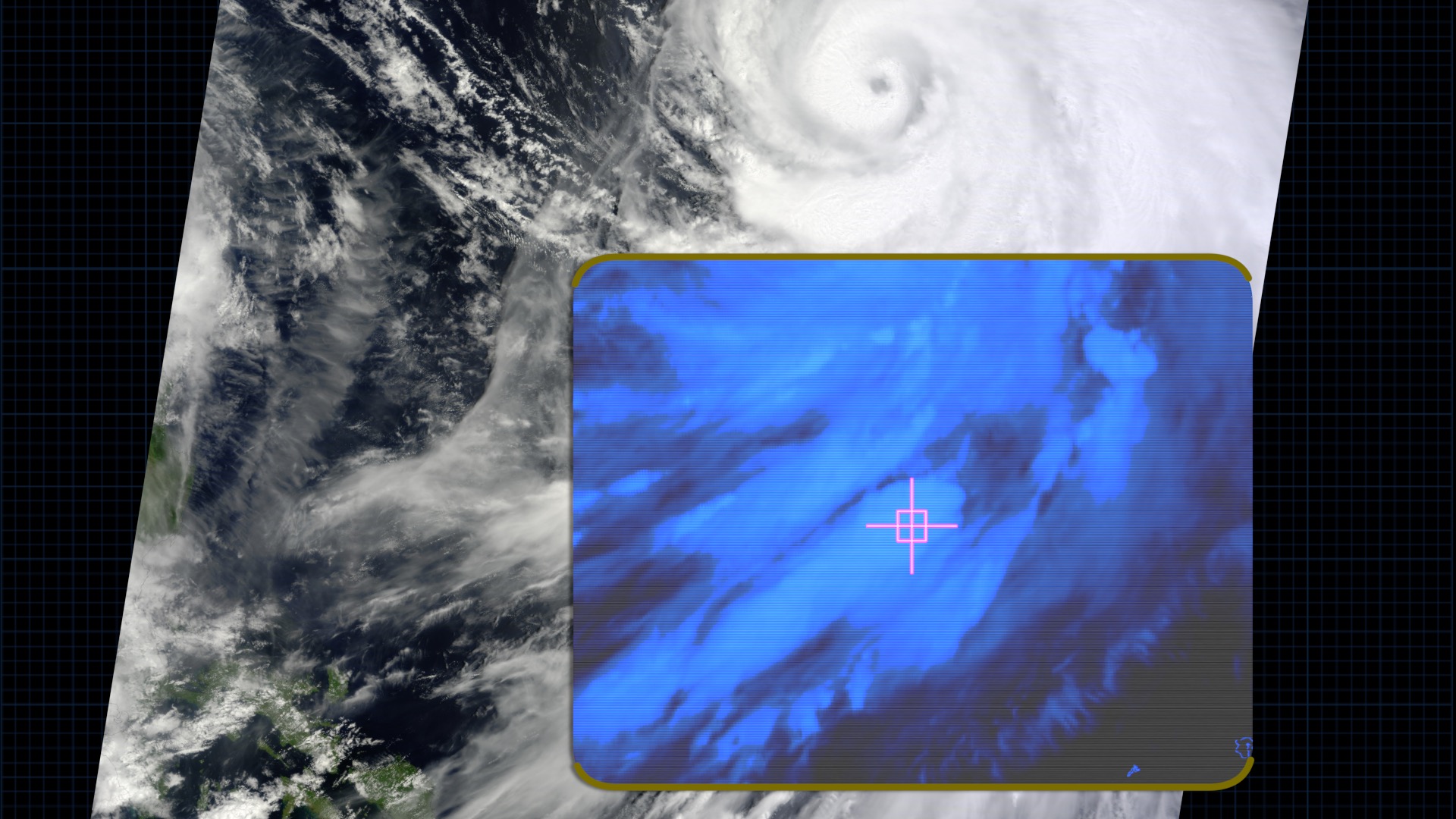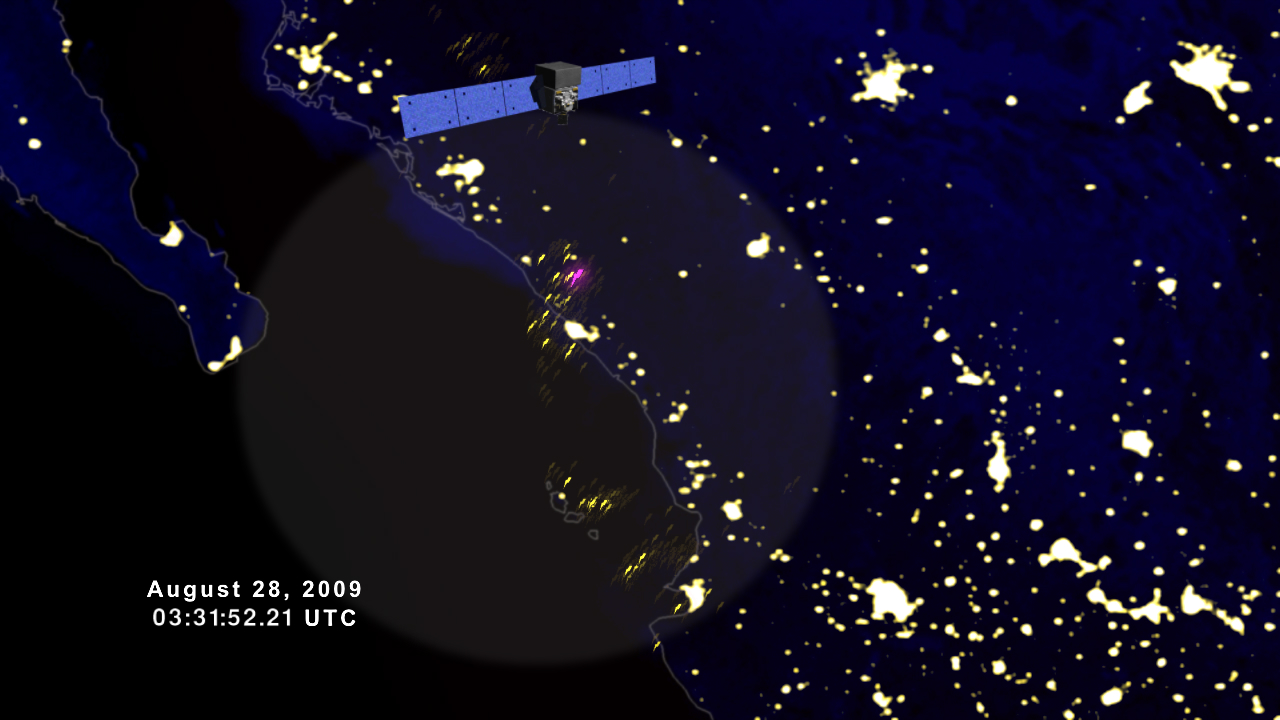NASA's Fermi Helps Scientists Study Gamma-ray Thunderstorms
New research merging Fermi data with information from ground-based radar and lightning networks shows that terrestrial gamma-ray flashes arise from an unexpected diversity of storms and may be more common than currently thought.
Watch this video on the NASA Goddard YouTube channel.
For complete transcript, click here.
Merging data on high-energy bursts seen on Earth by NASA's Fermi Gamma-ray Space Telescope with data from ground-based radar and lightning detectors, scientists have completed the most detailed analysis to date of the types of thunderstorms producing terrestrial gamma-ray flashes, or TGFs.
TGFs occur unpredictably and fleetingly, with durations less than a thousandth of a second, and remain poorly understood. Yet the gamma rays they produce rank among the highest-energy light naturally produced on Earth.
Earlier Fermi studies helped uncover lightning-like radio signals emitted by TGFs. This made it possible to use ground-based lightning location networks to pin down storms producing the flashes, opening the door to a deeper understanding of the meteorology powering these extreme events.
Scientists gathered a sample of nearly 900 Fermi TGFs accurately located by ground networks, which can pinpoint the location of lightning discharges -- and the corresponding signals from TGFs -- to within 6 miles (10 km) anywhere on the globe. From this group, they identified 24 TGFs that occurred within areas covered by Next Generation Weather Radar (NEXRAD) sites.
The researchers found that even weak and marginally electrified storms are capable of producing TGFs.
The new study also confirms previous findings indicating that TGFs tend to occur near the highest parts of a thunderstorm, between about 7 and 9 miles (11 to 14 kilometers) high. However, TGFs associated with lightning at lower altitudes would be so weakened by traveling a longer path through the atmosphere that Fermi couldn't detect them. If true, the estimated number of 1,100 TGFs occurring each day may be much larger than previously thought.

Updrafts and downdrafts within thunderstorms force rain, snow and ice to collide and acquire an electrical charge. Usually, positive charge accumulates in the upper part of the storm and negative charge gathers below. When this electrical field becomes so strong it breaks down the insulating properties of air, a lightning discharge occurs. Under just the right conditions, the upper part of an intracloud lightning bolt disrupts the storm's electric field in such a way that an avalanche of electrons surges upward at high speed. When these fast-moving electrons are deflected by air molecules, they emit gamma rays and create a TGF. There are about 2,000 intracloud discharges for each TGF detected by Fermi.
Credit: NASA's Goddard Space Flight Center

Three storms within the coverage area of the NEXRAD radar site at Key West, Florida, illustrate the range of weather capable of producing TGFs. The insets show the maximum height of radar reflectivity echoes, which helps identify strong thunderstorm updrafts, for each storm at the time a TGF occurred. The central column shows the 3-D distribution of the radar echoes and the location of the TGF (shown as a lightning bolt).
Credit: NASA's Goddard Space Flight Center/T. Chronis and M. Briggs, UAH
For More Information
Credits
Please give credit for this item to:
NASA's Goddard Space Flight Center. However, please credit individual items as indicated above.
-
Producer
- Scott Wiessinger (USRA)
-
Science writer
- Francis Reddy (University of Maryland College Park)
-
Animators
- Scott Wiessinger (USRA)
- Walt Feimer (HTSI)
- Tom Bridgman (Global Science and Technology, Inc.)
-
Video editor
- Scott Wiessinger (USRA)
-
Narrator
- Scott Wiessinger (USRA)
-
Scientists
- Michael Briggs (NASA/MSFC)
- Themis Chronis (UAH)
-
Writer
- Scott Wiessinger (USRA)
-
Graphics
- Francis Reddy (University of Maryland College Park)
Release date
This page was originally published on Monday, December 15, 2014.
This page was last updated on Wednesday, May 3, 2023 at 1:50 PM EDT.
Series
This page can be found in the following series:Tapes
The media on this page originally appeared on the following tapes:-
Fermi TGF Common
(ID: 2014107)
Monday, December 15, 2014 at 5:00AM
Produced by - Robert Crippen (NASA)


